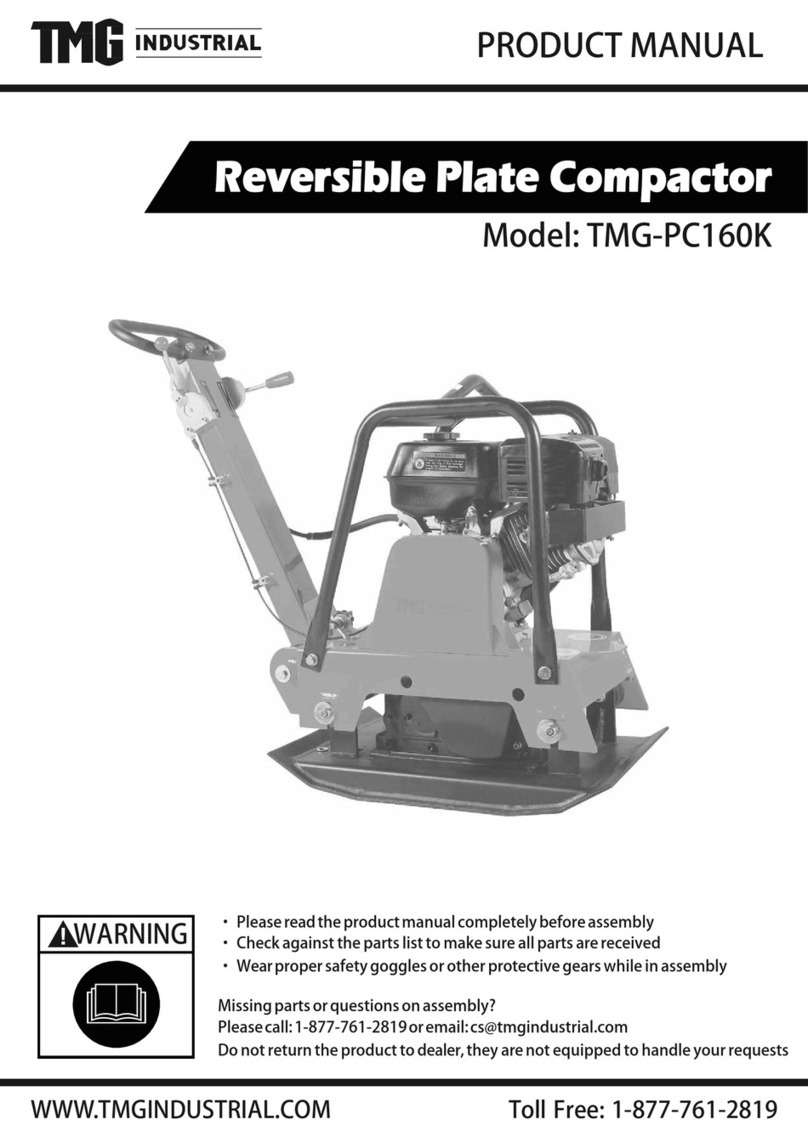
4
SV 23E
Dok: 101514-GB 1833
Never smoke when you are lling the fuel tank or
when you are working with the machine or per-
forming service on it.
Only store fuel in a container that is specially de-
signed and approved for the purpose.
Used fuel and oil containers must be attended to
and returned to the retailer.
Never use your ngers to look for uid leaks.
WARNING! Unexpected movements
The machine can be subjected to powerful stresses
during operation. If the machine breaks or gets
stuck on something, it might result in sudden and
unexpected movements causing injury.
Always inspect the machinery prior to use. Never
use the machine if you suspect that it has been
damaged.
Make sure that the control lever is always clean
and free from fat and oil.
Keep your feet away from the machine.
Never sit on the machine.
Never use force nor abuse the machine.
Pay attention and watch what you are doing.
WARNING! Dust and smoke risks
Dust and/or smoke generated or spread when you
use the machine can cause serious and permanent
respiratory illness or injury (for example silicosis
or other incurable lung disease that can be fatal,
cancer, foetal injuries and/or skin inammation).
Certain dust and smoke generated by packing work
can contain substances that are known to cause
respiratory illness, cancer, deformations or other
reproductive injuries. Dust and vapours in the air
can be invisible to the naked eye; therefore, do not
rely on your vision to determine whether there is
dust or vapour in the air. In order to reduce the risk
of exposure to dust and smoke, do the following:
Perform a site-specic risk assessment.
The risk assessment should entail dust and smoke
generated by the use of the machine and the risk of
disturbing existing dust.
Wear, maintain and correctly use the respiratory
protection as assigned by your employer and are in
accordance with occupational pensions, health and
safety regulations. Respiratory protection must be
effective and appropriate for the type of substance
in question (and in appropriate cases, be approved
by the relevant state authority).
Working in a well-ventilated area. If the machine has
an exhaust system, direct the exhaust fumes as must
as possible to reduce the dust in a dusty environment
being spread about.
Use and maintain the machine as recommended
in the enclosed operating and safety instructions.
Clothes are washed or disposed of safely at the
workplace. Shower and change into clean clothes
before leaving the workplace in order to reduce ex-
posure to dust and fumes for yourself, other persons,
cars, residences and other areas.
Avoid eating, drinking, consuming tobacco products
in the area where there is dust or smoke. Wash your
hands and face thoroughly as soon as possible when
leaving the exposed area, and always before eating,
drinking, consuming tobacco products or making
contact with other people. Obey all the applicable
laws and directives, including professional work en-
vironment regulations.
Take part in air checks, medical examination pro-
grams and health and safety training programs
provided by your employer or by your trade organi-
sation for health and safety rules and recommenda-
tions. Consult with physicians in relevant occupa-
tional and environmental medicine.
Work with your employer and trade organisation in
order to reduce dust and smoke exposure from the
workplace and to reduce the risks. Effective pro-
grams were health and safety, rules of procedure to
protect employees and others from hazardous expo-
sure to dust and smoke should be prepared and car-
ried out based on the guidelines offered by experts in
health and safety.
WARNING! Exhaust risks
Exhaust from the machine’s combustion motors
contain carbon monoxide, which is poisonous,
and some chemicals that cause cancer, foetal inju-
ries or other reproductive injuries. The inhalation
of exhausts can cause severe injuries, illness or
death.
Never breathe in exhaust gases.
Make sure there is plenty of ventilation (the use
of fans if necessary).
































